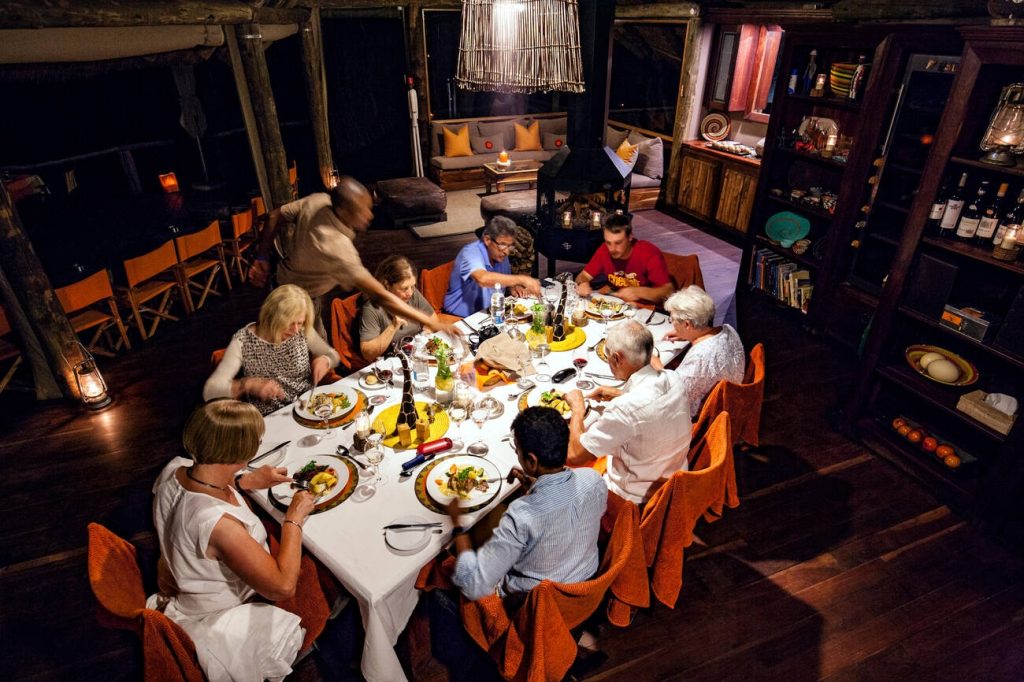So, you think you’re a wine connoisseur, huh? Well, get ready to dive into the world of Italian wines like never before. In this guide, we’ll show you how to buy and enjoy the finest Italian wines online, all from the comfort of your own home. No more wandering aimlessly through crowded wine stores or relying on the recommendations of so-called experts. We’ll give you the knowledge and tools to navigate the vast world of Italian wines with confidence. From the iconic regions of Piedmont and Tuscany to the hidden gems of Campania and Sicily, we’ll help you discover the perfect bottle to suit your taste and budget. So, grab your corkscrew and get ready to uncork the secrets of Italian wine. Cheers!
Contents
- Italian Wine Regions and Their Specialties
- Exploring the Wines of Northern Italy
- Uncovering the Flavors of Central Italy
- Delving Into the Wines of Southern Italy and Islands
- Discovering Chianti Classico and Its Sub-Regions
- Understanding Italian Wine Label Classifications
- Tips for Buying Italian Wines Online
- How to Enjoy Italian Wines at Home
Italian Wine Regions and Their Specialties
When exploring Italian wines online, it’s essential to understand the specialties of each region. Italy is known for its diverse wine regions, each with its own unique grape varieties, climate, and terroir influences. By exploring regional variations, you can discover the distinct flavors and characteristics that make Italian wines so special.
In Northern Italy, the region of Piedmont is famous for its red wines, particularly Barolo and Barbaresco. Made from the nebbiolo grape, these wines are known for their high tannin and acidity levels, with aromas of roses and tar in Barolo, and floral and spice notes in Barbaresco. Another notable wine from Piedmont is Gavi, a white wine made from the cortese grape, offering a refreshing and crisp flavor profile with hints of lemon, peach, and minerals.
Moving to Central Italy, Tuscany is renowned for its Chianti wines, made primarily from the sangiovese grape. Chianti can range from light and fruity to bold and complex, making it a versatile choice for many dishes. Another iconic wine from Tuscany is Brunello di Montalcino, aged for a minimum of five years before release, and known for its elegance and depth of flavor.
In Southern Italy and the Islands, regions like Puglia, Campania, and Sicily showcase unique grape varieties and styles. Primitivo, grown in Puglia, produces rich and full-bodied red wines with flavors of blackberry and spice. Aglianico, found in Campania and Basilicata, produces structured and age-worthy wines with dark fruit and earthy notes. Sicily offers diverse wines like Nero d’Avola, with its full-bodied profile of dark fruits, chocolate, and spice, and Etna Rosso, made from the nerello mascalese grape, showcasing volcanic minerality and complexity.
Exploring Italian wine regions allows you to discover the unique flavors, grape varieties, and wineries that make each region special. Whether you’re looking for a bold and complex red or a crisp and refreshing white, Italian wines offer a wide range of options to suit your taste preferences. Pair them with local dishes like pasta, risotto, or grilled meats for an authentic Italian dining experience. Notable wineries and producers to look out for include famous names like Barolo’s Roberto Voerzio and Tuscany’s Antinori. So, dive into the world of Italian wines online and let your taste buds embark on a journey of flavors and traditions.
Exploring the Wines of Northern Italy
To continue your exploration of Italian wines online, let’s delve into the wines of Northern Italy, where you can discover the renowned flavors and characteristics of this region. One of the prominent wine regions in Northern Italy is Piedmont, known for its picturesque vineyards and exceptional wines. Piedmont is particularly famous for its unique grape varieties, such as Nebbiolo, Barbera, and Dolcetto.
Nebbiolo is the star of the region, producing iconic wines like Barolo and Barbaresco. These red wines are known for their high tannin and acidity levels, with aromas of roses and tar. Barbera and Dolcetto are also widely grown and offer different flavor profiles, with Barbera being more vibrant and juicy, and Dolcetto being lighter with flavors of blackberries and violets.
When it comes to wine and food pairings, Piedmont wines are incredibly versatile. The robust structure of Barolo and Barbaresco pairs beautifully with rich, hearty dishes like braised meats and aged cheeses. Barbera and Dolcetto, with their fresh acidity, are excellent companions for tomato-based pasta dishes, roasted poultry, and even pizza.
If you’re interested in wine tourism, Northern Italy offers a plethora of opportunities. The Piedmont vineyards, with their rolling hills and charming wineries, provide a picturesque backdrop for wine enthusiasts. You can embark on guided tours, participate in tastings, and even witness the winemaking process firsthand.
In recent years, organic and biodynamic winemaking practices have gained popularity in the region. Many wineries in Northern Italy have embraced sustainable farming methods, resulting in wines that reflect the terroir and express a sense of place. These practices not only benefit the environment but also contribute to the overall quality and uniqueness of the wines.
Exploring the wines of Northern Italy is a journey filled with exceptional flavors, breathtaking landscapes, and a deep appreciation for the art of winemaking.
Uncovering the Flavors of Central Italy
Explore the vibrant flavors of Central Italy and uncover the diverse wines that this region has to offer. Central Italy is home to some of the most iconic wines in the country, including Chianti, Brunello di Montalcino, and Vino Nobile di Montepulciano. These wines are made primarily from the sangiovese grape and showcase the unique terroir of the region.
To help you navigate the wines of Central Italy, here is a table highlighting some of the key information you need to know:
| Wine | Food Pairings | Wine Festivals | Wine Tours | Wine Producers | Wine History |
|---|---|---|---|---|---|
| Chianti | Pasta with tomato-based sauces | Chianti Classico Festival | Chianti Wine Tour | Antinori, Castello di Ama | Chianti has a long history dating back to the 13th century and was the first wine region |
| Brunello di Montalcino | Grilled meats and aged cheeses | Benvenuto Brunello | Montalcino Wine Tour | Biondi Santi, Banfi | to receive DOCG status. It is known for its bold flavors and long aging potential. |
| Vino Nobile di Montepulciano | Roasted lamb and game meats | Cantine Aperte | Montepulciano Wine Tour | Avignonesi, Poliziano | Vino Nobile di Montepulciano has been produced since the 8th century and is one of the oldest |
| wine regions in Italy. It offers elegant wines with great aging potential. |
Central Italy is also known for its wine festivals, such as the Chianti Classico Festival and the Benvenuto Brunello. These festivals provide an opportunity to taste a wide range of wines and immerse yourself in the local wine culture. Additionally, many wineries in Central Italy offer wine tours, where you can explore the vineyards, learn about the winemaking process, and sample their wines.
Some notable wine producers in Central Italy include Antinori, Castello di Ama, Biondi Santi, Banfi, Avignonesi, and Poliziano. These producers are known for their commitment to quality and their contribution to the rich wine history of the region.
Delving Into the Wines of Southern Italy and Islands
Discover the diverse and rich wines of Southern Italy and the Islands, where you can experience unique flavors and terroirs that are sure to captivate your palate. Start by understanding Sicilian wines, which are known for their bold and expressive character. Sicily is home to a variety of grape varieties, including Nero d’Avola, which produces full-bodied wines with flavors of dark fruits, chocolate, and spice. Another standout is Etna Rosso, made from the nerello mascalese grape grown on the slopes of Mount Etna. These wines are elegant and complex, with a distinct volcanic minerality.
Moving on to Sardinia, you’ll find a different set of unique grape varieties. One standout is Cannonau, similar to grenache, which produces full-bodied wines with flavors of red fruits and spices. Vermentino is another notable grape variety, producing crisp and aromatic white wines with flavors of citrus and tropical fruits.
The influence of volcanic soil is also prominent in Southern Italian wines. The volcanic soil in Sicily and the Aeolian Islands adds a distinct mineral character to the wines, making them truly special.
Lastly, don’t miss the sweet wines from the Aeolian Islands, specifically Malvasia delle Lipari. Made from the malvasia grape, these wines are aromatic with flavors of apricot, honey, and dried fruits.
Explore the wines of Southern Italy and the Islands, and you’ll discover a whole new world of flavors and terroirs that will leave a lasting impression on your palate.
Discovering Chianti Classico and Its Sub-Regions
As you delve into the wines of Southern Italy and the Islands, you’ll now shift your focus to discovering Chianti Classico and its sub-regions. Chianti Classico, a sub-region of Tuscany, is known for producing iconic wines that showcase the true essence of Italian winemaking. Here are some key aspects to explore in Chianti Classico:
- Exploring Varietals: Chianti Classico wines are primarily made from the sangiovese grape, which imparts flavors of red cherries, violets, and earthy notes. However, other grape varieties such as canaiolo and colorino are also used to add complexity and depth to the wines.
- Chianti Classico Vineyards: The vineyards in Chianti Classico are located south of Florence and encompass the picturesque villages of Greve, Radda, and Panzano. The vineyards are typically situated on rolling hills, benefiting from the ideal combination of altitude, soil, and climate.
- Food Pairings: Chianti Classico wines are incredibly versatile when it comes to food pairings. They pair well with traditional Italian dishes such as pasta with tomato-based sauces, grilled meats, aged cheeses, and hearty stews. The acidity and tannins in the wine help to cut through rich and fatty flavors, enhancing the overall dining experience.
- Aging Potential: Chianti Classico wines have excellent aging potential. While some wines can be enjoyed in their youth, the best examples benefit from several years of bottle aging. This allows the flavors to integrate and develop into a harmonious and complex profile.
Embarking on a wine tasting experience in Chianti Classico will give you the opportunity to discover the rich history, beautiful landscapes, and exceptional wines that this region has to offer.
Understanding Italian Wine Label Classifications
When it comes to buying and enjoying Italian wines online, it is essential to understand the various wine label classifications used in Italy. The Italian wine classification system is governed by strict regulations that ensure the quality and authenticity of the wines. The top classification is DOCG, which stands for Denominazione di Origine Controllata e Garantita. Wines with DOCG designation are subject to rigorous production rules and are considered the highest quality Italian wines. DOC, or Denominazione di Origine Controllata, is the next level below DOCG and also guarantees the origin and quality of the wine. Another classification is IGT, which stands for Indicazione Geografica Tipica. Wines with IGT designation have more flexibility in terms of the grape varieties used and winemaking techniques.
Decoding Italian wine labeling can be a bit overwhelming, but it is worth understanding the different classifications to make informed choices when shopping for Italian wines online. DOCG wines are the pinnacle of quality, while DOC wines offer a guarantee of origin and quality. Exploring Italian IGT wines can lead to exciting discoveries, as they often showcase unique grape varieties and winemaking styles not allowed under DOC and DOCG regulations. By familiarizing yourself with Italian wine label regulations and classifications, you can confidently navigate the world of Italian wines and find the perfect bottle to enjoy.
Tips for Buying Italian Wines Online
Looking to buy Italian wines online? Here are some helpful tips to make your online wine shopping experience easier and more enjoyable:
- Exploring Italian wine regions: Before making a purchase, take some time to familiarize yourself with the different wine regions of Italy. Each region has its own unique characteristics and grape varieties, so understanding the differences can help you make an informed choice.
- Decoding Italian wine labels: Italian wine labels can be confusing, but understanding the key terms and classifications can help you navigate through the options. Learn about the different classifications such as DOCG, DOC, and IGT, as well as the meaning of terms like Riserva and Superiore.
- Pairing Italian wines with food: Italian wines are known for their versatility when it comes to pairing with food. Consider the flavors and ingredients of the dishes you enjoy, and look for wines that will complement them. For example, a bold Barolo pairs well with rich, meaty dishes, while a crisp Vermentino is perfect for seafood.
- Best online retailers for Italian wines: When buying Italian wines online, it’s important to choose a reputable retailer. Look for online stores that specialize in Italian wines and have a wide selection to choose from. Some popular online retailers include Wine.com, Italian Wine Merchants, and Eataly Vino.
How to Enjoy Italian Wines at Home
Savor the flavors of Italian wines in the comfort of your own home by uncorking a bottle and indulging in the rich aromas and vibrant tastes. Pairing Italian wines with food is a great way to enhance your dining experience. For red wines, try pairing a bold Barolo with a hearty steak or a Barbaresco with roasted lamb. If you prefer white wines, a crisp Gavi or Vernaccia di San Gimignano would complement seafood dishes or light pasta.
When tasting Italian wines, remember to use all your senses. Take a moment to appreciate the color of the wine, the aromas that waft from the glass, and the flavors that dance on your palate. Allow the wine to breathe before taking your first sip, and then take small sips to fully appreciate the nuances of the wine.
Popular Italian wine varietals to look out for include the robust Nebbiolo from Piedmont, the elegant Sangiovese from Tuscany, and the rich Nero d’Avola from Sicily.
While you may not be able to physically explore Italian wine regions at the moment, you can still virtually visit them through online wine tastings and educational resources. Learn about the different terroirs and winemaking techniques that make each region unique.
If you’re longing for an Italian wine travel experience, try recreating it at home. Prepare traditional Italian dishes, play Italian music, and imagine yourself strolling through vineyards under the warm Italian sun. Cheers to a delightful Italian wine experience in the comfort of your own home!




